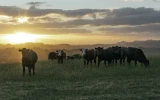Is Alpaca Farming Profitable? (Detailed Breakdown)
Alpacas are known for their soft, luxurious wool, which can demand high prices in the market. However, profitability in alpaca farming hinges on various factors such as initial investment, ongoing costs, and marketing. In this article, we will provide you with a detailed breakdown of the expenses and revenue, so you can get a clearer picture of the potential financial outcomes of alpaca farming.
Alpaca farming can be profitable. If you have 10 alpacas that produce 8 lbs of fleece per year (costing $3/lb), your annual income can be $240 from fleece alone. If you sell 2 alpacas per year at $1,000 each, you can have an annual income of $2,000 just from breeding.
With fleece production, the quality of the fleece is a critical factor in maximizing profits, as higher quality fleece commands a higher price. Let's take a closer look at what other factors affect the possible income from selling alpaca fleece.
Summary
- With an alpaca producing between 5 and 10 pounds of fleece annually, and top-quality fleece fetching between $40 and $60 per pound, a single alpaca can generate a gross income of $320 to $480 from fleece alone.
- High-quality alpacas, especially proven breeders with exceptional fleece characteristics, can sell for anywhere from $500 to over $10,000 per animal.
- Agritourism, such as offering farm tours, can generate anywhere from $100 to $5,000+ annually, depending on the popularity and marketing of the farm.
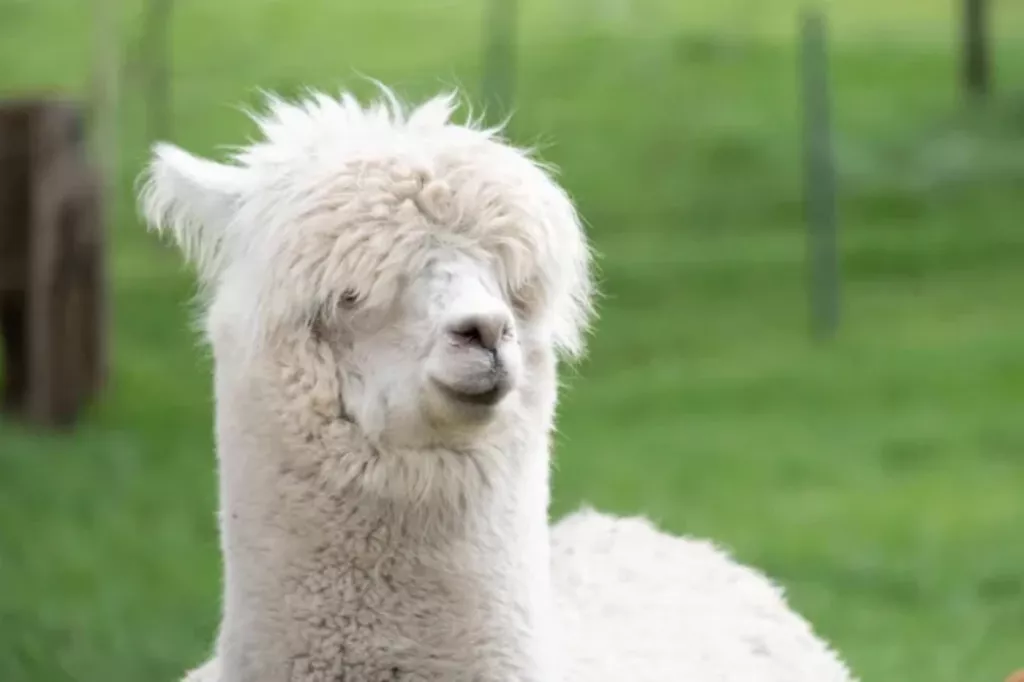
On this page:
Breakdown of Profits From Alpaca Farming
How much money can you make raising alpacas?
The profitability of raising alpacas largely depends on the sale of alpaca fiber and breeding stock, as well as diversified income streams like agritourism and online sales of alpaca products.
| Profit Source | Estimated Profit Range |
|---|---|
| Fleece sales (top quality) | $280 - $480 per alpaca |
| Breeding stock sales | $500 - $10,000+ per alpaca |
| Agritourism & other sales | $100 - $5,000+ annually |
Potential profit from fleece sales
A single alpaca can produce about 5 to 10 pounds of fleece per year. If you shear your alpaca and obtain 8 pounds of top-quality fiber, you could potentially earn between $320 and $480 from fiber sales alone.
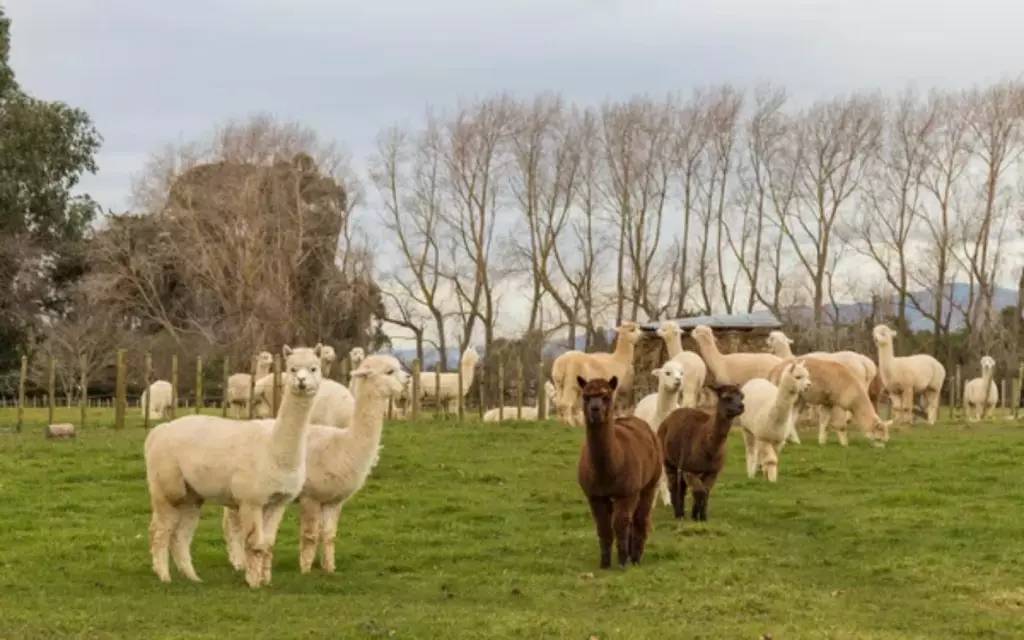
Let's say your costs for maintaining an alpaca, including feed, veterinary care, and other needs, average $200 annually.
Subtracting this from your gross earnings of $480 from fiber sales gives you an estimated net profit of $280 per year, per alpaca, just from the fiber.
The tables below show the average price of an alpaca fiber based on type of fleece and fiber quality;
| Fleece Type | Average Price per Pound | Annual Fiber Yield per Alpaca |
|---|---|---|
| Huacaya | $2 - $5 | 5 - 10 lbs |
| Suri | $4 - $7 | 4 - 8 lbs |
- Huacaya alpaca fleece often fetches a higher price due to its fluffy and crimpy texture.
- Suri alpaca fleece is known for its luster and drape, making it valuable as well.
| Fiber Quality | Price per Pound |
|---|---|
| Top quality | $40 - $60 |
| Medium quality | $20 - $35 |
| Lower quality | $10 - $20 |
-
Top-quality alpaca fiber: This is the finest alpaca fiber, which is typically very soft, with a high degree of fineness and uniformity. It is often sought after for premium applications such as fine clothing and luxury garments.
-
Medium-quality alpaca fiber: This grade is a step down from the top quality but still maintains a good level of softness and is suitable for a wide range of products. It might not be as fine or evenly textured as the top-quality fiber but is still very usable for quality textiles.
-
Lower-quality alpaca fiber: This is the lowest grade, which may be coarser, shorter, or less uniform than the higher grades. Despite being of lower quality, it is still useful for many applications, such as felted products or items where the utmost softness is not required.
Calculating profit margin from alpaca farming
Let's say an alpaca farm has $100,000 in annual revenue from sales of alpaca fiber, breeding, and boarding services. The farm's annual operating expenses are $50,000, including feed, veterinary care, shearing services, utilities, maintenance, etc.
The farm's profit can be calculated as follows:
- Annual revenue: $100,000
- Annual operating expenses: $50,000
- Annual profit = Revenue - Expenses = $100,000 - $50,000 = $50,000
- Profit margin = (Profit / Revenue) x 100 = ($50,000 / $100,000) x 100 = 50%
Possible income from breeding stock
Breeding alpacas can be lucrative, with high-quality stock commanding premium prices. Proven breeders with exceptional fleece characteristics are more valuable.
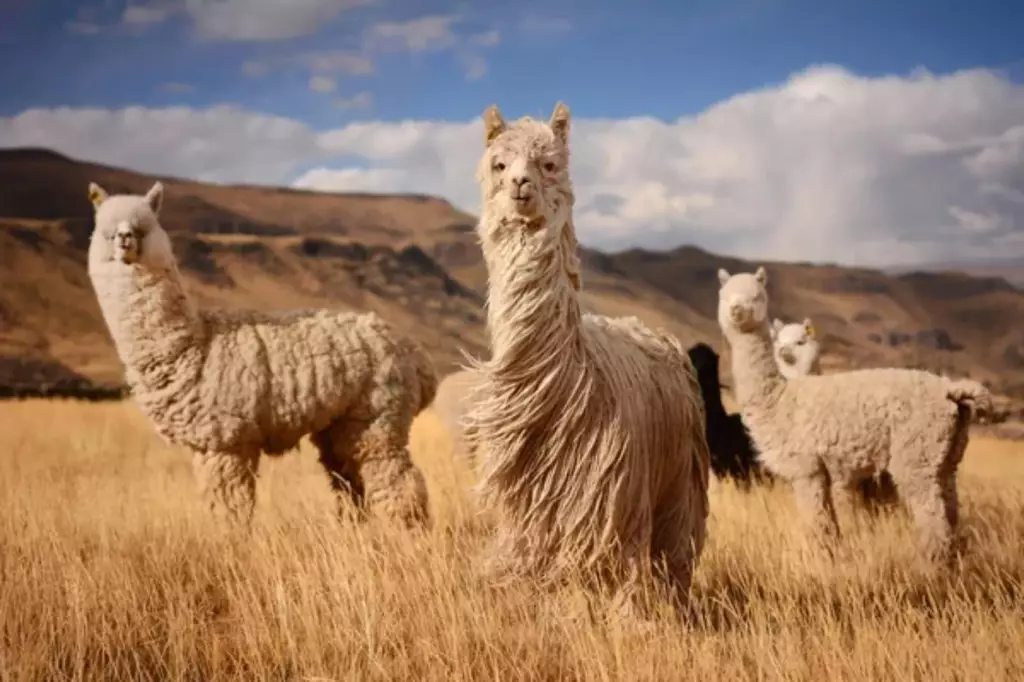
Alpacas are considered one of the easiest farm animals suitable for beginners. Although they can't be sold for meat, you can sell their offspring, with prices ranging between $10,000 and $20,000 for healthy female alpacas.
Estimated income from diverse streams
Creating multiple sources of income, including offering farm tours for agritourism, can increase your profit margins. Personalized marketing strategies and an online presence can boost your sales of alpaca products, contributing to your overall income.
Breakdown of Costs in Alpaca Farming
Initial investments in alpaca farming
Starting an alpaca farm involves several key initial investments to ensure the comfort, safety, and health of the alpacas. Here's a breakdown of these investments:
| Start-Up Costs | Cost Estimate |
|---|---|
| Land | $1,000 to $10,000 per acre |
| Fencing | $1,500 to $5,000+ |
| Shelter | $5,000 to $20,000 |
| Equipment | $2,000 to $10,000 |
Costs for purchasing land
Alpacas require a decent expanse of land for grazing and exercise. For a smaller-scale operation, you might need anywhere from one to ten acres. This allows for a comfortable environment for the alpacas and space for farm operations.
Costs for installing a fencing
To keep alpacas safe from predators and contained within their designated grazing areas, strong and reliable fencing is essential.
The costs for installing fencing can range from $1,500 to $5,000 or more, with variations depending on the size of the area fenced and the materials used.
Costs of building a shelter
Although alpacas are one the few small farm animals that can do well even if left alone, they would still need shelter to protect them from the elements, such as extreme sun, wind, rain, and snow.
A basic barn or shed will suffice, and the costs for constructing such a shelter can vary widely, from $5,000 to $20,000. The price will depend on the size and complexity of the structure as well as local building costs.
Costs of buying equipment
The equipment needed for an alpaca farm includes items for shearing, feeding, and general maintenance. Initial equipment costs can range from $2,000 to $10,000. The exact cost will depend on the quality and quantity of the equipment purchased.
Ongoing expenses in alpaca farming
| Ongoing Expenses | Estimated Cost Range |
|---|---|
| Feed & hay | $20-$30 per alpaca per month |
| Veterinarian & vaccinations | $100-$200 per alpaca per year |
| Insurance & registration | $500-$1,000 annually |
| Birthing & supplements | $100-$500 per alpaca per year |
Costs for feed & hay
Alpacas primarily eat grass and hay. Additional feed supplements may be required to provide a balanced diet, especially during winter or drought conditions when natural forage is scarce.
Costs for yearly vet visits and vaccinations
Alpacas primarily eat grass and hay. Additional feed supplements may be required to provide a balanced diet, especially during winter or drought conditions when natural forage is scarce.
Costs of obtaining liability insurance and registering your farm
Liability insurance is important for protecting the farm against potential claims, while registration fees are associated with keeping the alpacas' pedigree and ownership records up to date. You might also need to file for tax purposes as you are producing a farm product.
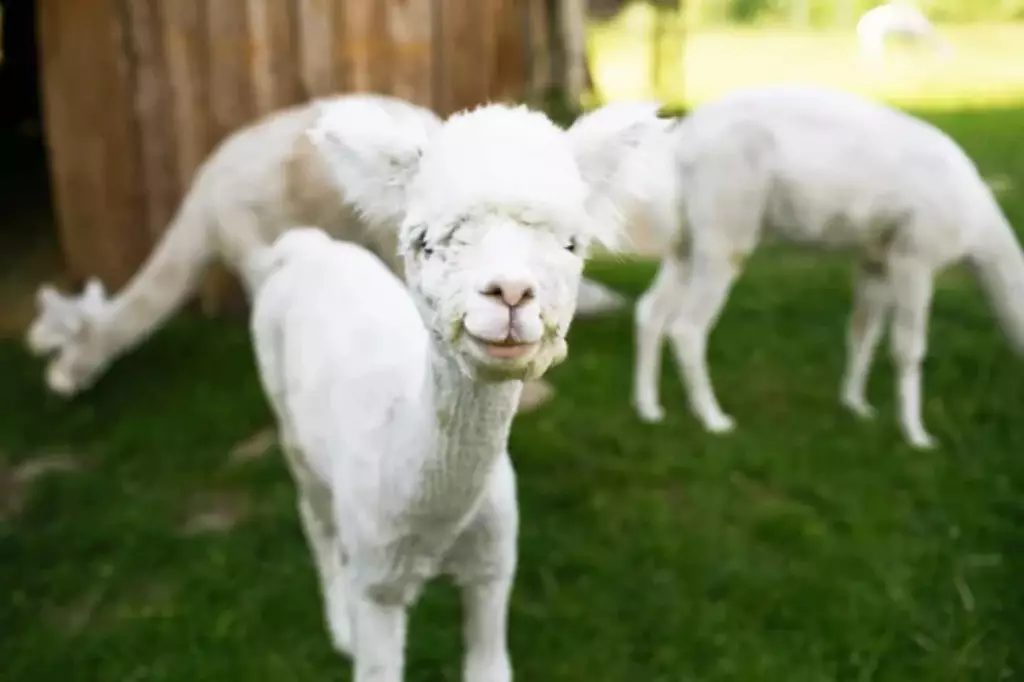
Costs for birthing and supplements
The birthing process can require special care and sometimes veterinary assistance. Nutritional supplements may be needed to support the health of pregnant and nursing alpacas, as well as the growth of their crias.
Minimizing Costs and Maximizing Profits in Alpaca Farming
Here are several strategies for achieving these objectives of minimizing costs and maximizing profits in alpaca farming:
Practicing efficient herd management
You can do this through the following:
- Selective breeding: Focus on breeding alpacas with high-quality fleece and good health. This can lead to a superior herd over time, with animals that produce more valuable fiber and require less veterinary care.
- Health management: Implementing a robust healthcare program to prevent diseases can save on veterinary costs in the long run. This includes regular vaccinations, deworming, and health checks.
- Pasture management: Efficient use of pasture can reduce feed costs. Rotational grazing helps maintain pasture quality and reduces the need for supplemental feeding.
Applying cost-saving tips
Some of the most useful tips to save on costs are the following:
- Bulk purchasing: Buying feed and supplies in bulk can save money, but requires adequate storage to prevent spoilage.
- Do-It-Yourself: Performing tasks like farm maintenance, shearing, and fleece processing in-house can save on labor costs, provided the farmer has the necessary skills.
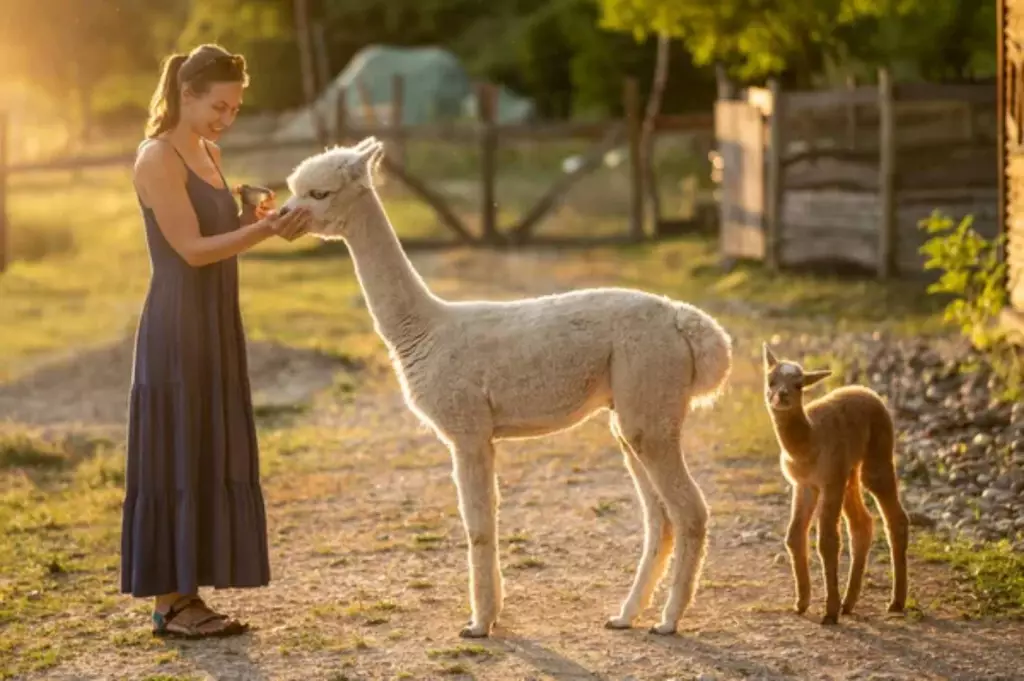
Keeping up with unique marketing and sales strategy
You can start building the following:
- Branding: Develop a strong brand for the farm and its products to differentiate from competitors and justify premium pricing.
- Online presence: Utilize social media and a professional website to reach a wider audience and market products effectively.
- Customer relationships: Building strong relationships with customers can lead to repeat business and referrals, which are crucial for long-term success.
Applying for Alpaca Farming Grants
Alpaca farming, like many agricultural activities, can be capital-intensive and may require significant investment for things such as land, infrastructure, animals, and equipment.
In some regions, government agencies, non-profit organizations, and other institutions may offer grants to support the agricultural sector, including alpaca farming.
These grants can help with startup costs, expansion, research, sustainability practices, and more. Here are some types of grants that alpaca farmers might seek:
Grants from the USDA
In the United States, the Department of Agriculture (USDA) offers various grants and financial assistance programs that can benefit alpaca farmers. For example:
Value-Added Producer Grants (VAPG)
These grants help agricultural producers enter into value-added activities related to processing and marketing new products. The goal is to generate new products, create and expand marketing opportunities, and increase producer income.
Rural Energy for America Program (REAP) grants
REAP provides grants for energy efficiency improvements and renewable energy systems, which could be used for things like solar panels on an alpaca farm.
Sustainable Agriculture Research and Education (SARE) grants
SARE grants fund research and education projects that advance sustainable agricultural practices. Alpaca farmers interested in sustainable practices could apply for these grants to fund their projects.
State and local government grants
State departments of agriculture or rural development agencies often have grants specifically tailored for farmers within their jurisdiction. These can include grants for business development, marketing, and agricultural innovation.
Grants from non-profit organizations and associations
Some non-profit organizations focused on agriculture or specific livestock may offer grants or financial assistance for research, conservation, or the promotion of specific agricultural practices. Alpaca associations may have small grants or scholarships for members.
